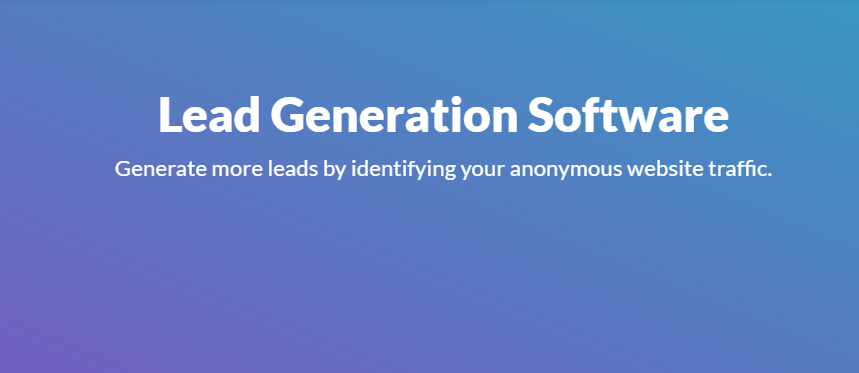Inbound Marketing is a term that was coined by HubSpot in 2006, and since then has grown in size and magnitude. Rather than being just one tool, one strategy or one single campaign, inbound marketing is a set of ongoing activities that – when implemented alongside each other – drive revenues.
10 Inbound Marketing Tactics
Implement these valuable inbound marketing tactics to increase engagement and drive revenue:
- Have a blog
- Build backlinks
- Create advanced content
- Use video content
- Promote content on social media
- Use email marketing
- Use marketing automation
- Have an SEO strategy
- Optimize your site for mobile
- Test your strategies
Have A Blog
Having a company blog helps to engage customers in a conversation. Write about content relevant to current and future customers. Although it may be hard to come up with topics to write about, make sure your blog is consistent with your brand. Follow these company blogging tips for more inspiration!
In addition to writing content that is consistent with your brand, be sure you’re consistent when publishing and sharing blog posts. Search engines reward consistency, and this is where you’ll see steady growth.
Build Backlinks
If you’re not already trying to build backlinks, then you’re probably wondering what in the world a backlink is. To put simply, a backlink is when another website has content that links directly to your website.
When it comes to driving organic traffic to your site, backlinks play an important role. Promoting your blog content to other relevant influencers in your industry helps to increase the number of people that backlink to your site. However, just because you backlink to a relevant influencer does not mean they are guaranteed to backlink to your site.
Backlinks from other credible websites build your credibility and trustworthiness – which are things that search engines consider when ranking your site among the thousands of others. If you’re looking to improve your organic rankings, check out our favorite eCommerce SEO tools for backlink information and more.
Create Advanced Content
Yes, blogging is a great inbound marketing tactic – but creating advanced content only helps to improve your eCommerce site. Advanced content includes many things, but some of the most common include:
- eBooks
- Resources
- Tip Sheets
- How-To Guides
- Whitepapers
In contrast to blogs, advanced content discusses a topic in far much more detail. For example, if your brand wrote a blog about a certain topic, a great call-to-action to put at the bottom of the blog would be a button to view an eBook, how-to guide, etc.
Take advantage of creating advanced content. It shows your company’s expertise in the industry, encourages engagement and helps users learn more about your brand.
Use Video Content
According to Wyzowl, 80% of video marketers say video has directly helped increase sales. Excluding video from your inbound marketing strategy puts your brand at a serious disadvantage.
Not only does video content get your message across quicker, but it provides more value to the user. Sometimes, users misinterpret something through text. Video allows you to clearly share your message and appeal to emotions, which establishes and strengthens the audience’s relationship with your brand.
See how these brands use product videos to show how to use a product, compare products and promote a certain lifestyle.
Promote Content On Social Media
In today’s world, social media is one of the most effective outlets to market a brand. But – this doesn’t mean posting on social media platforms every once in a while.
Instead, it’s principal for brands to develop a well thought-out social media branding strategy. A strategic plan helps increase engagement and establish customer loyalty.
To get started, you must first understand your goals, who your audience is, and what they want to see. Then, choose the platforms that are most popular for your industry. Our favorites are Twitter, LinkedIn and Facebook.
Use Email Marketing
In addition to social media, email is a vital tool in attracting and nurturing customers. By having an optimized email marketing strategy, you’ll increase brand awareness and conversions.
Sending leads the right content at the right time in the buyer’s journey helps accelerate them through the sales funnel. By understanding the stage at which a user is in, you’ll have the opportunity to better optimize emails and send only relevant content.
And don’t forget to stay up-to-date with email trends. They’ll help you specifically tailor your messages to your audience.
Use Marketing Automation
Save time and money by automating your marketing activities. With this approach, there’s no need to perform repetitive tasks or manually create workflows. You can finally focus on growing your business.
Automating time-consuming tasks, like email marketing and social posts, is efficient for your brand and beneficial to customers. Sending personalized messages to each individual customer helps convert them into customers. The information you send is useful to the customer, customers are delighted with their purchases, and you’re making profits. Its a win-win.
Have An SEO Strategy
If your brand is having trouble ranking in organic search results, then you need to optimize your SEO strategy. By improving visibility on search engine results pages, you’ll see an increase in website traffic, brand awareness and conversion.
Optimizing your content and website structure may seem unnecessary, but search engines take these things into consideration when ranking your website. We highly recommend checking out this eCommerce SEO guide for a detailed breakdown of strategies for ranking in organic search results.
Optimize Your Site For Mobile
According to Shopify, 82% of smartphone users seek information from their devices before making an in-store purchase. With the prevalence of online shopping, this makes sense. Shoppers want to find the best deal before making a purchase.
Brands must expect to see an increase in mobile shoppers. Catering to shoppers who use a desktop is great, but brands must also optimize their website for mobile devices.
One of the most important elements of any website optimization strategy is offering a one-page checkout. Let’s face it; there’s nothing worse than shopping on a site for a considerable amount of time and arriving at the checkout only to find that it takes longer to place your order than it did to find the items you needed. Be sure to take this into consideration when optimizing your eCommerce website for mobile devices.
Test Your Strategies
We recommend A/B testing your marketing strategies to learn what works best for your business. With advances in marketing technologies, brands can A/B test almost any asset. It’s important to note that you’ll need a large audience base for the testing to be valid.
Conclusion
We hope you find as much value as we have when implementing these 10 inbound marketing tactics. Remember that all of these tactics, when executed in tandem, will drive conversion and revenue.
If you don’t experience increased conversions in the beginning, don’t worry. Keep testing and changing significant variables one at a time to determine what strategy works best for your brand.
If you have any questions or would like additional help implementing any of these inbound marketing tactics, contact us through the form below. Our team will be happy to help you.





